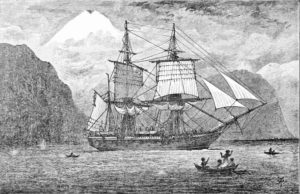- Series:History, Philosophy, Transcript English
Genesis 18:14
“Is any thing too hard for the LORD? At the time appointed I will return unto thee, according to the time of life, and Sarah shall have a son.”
 There are a number of myths surrounding Darwin and his theory of evolution. One abiding myth suggests that Darwin only came to the view that the Earth was millions of years old as a result of what he saw on the coastline of South America and in the Galapagos Islands when he was on his famous voyage on the Beagle. In fact, Darwin was already familiar with, and convinced of, deep time before he set off on the voyage.
There are a number of myths surrounding Darwin and his theory of evolution. One abiding myth suggests that Darwin only came to the view that the Earth was millions of years old as a result of what he saw on the coastline of South America and in the Galapagos Islands when he was on his famous voyage on the Beagle. In fact, Darwin was already familiar with, and convinced of, deep time before he set off on the voyage.
Darwin had been interested in the radical new deep-time geology being taught in Edinburgh during his year in the Scottish capital learning medicine. He probably spent more time learning the deep-time ideas of James Hutton than on medicine, and, as he did not like anatomy, he dropped out. Hutton’s ideas were developed by Charles Lyell, and Darwin took volume one of Lyell’s geological tome on the Beagle with him. Volume two had not yet been published, so he arranged for it to be sent on to him, and it arrived while the ship was in the vicinity of the River Plate. So, when Darwin reached the west coast of South America and the Galapagos, he was already fully convinced of old-earth timescales, and it was natural that these ideas informed his developing theory of evolution.
In one sense, it can be said that evolution requires deep time. The single changes proposed by Darwinism would have to be so numerous that time would be required for the processes. However, we can also point out that if a process is impossible today, then it remains impossible, however many millions of years it has. Author: Paul F. Taylor
Prayer: Thank You, Lord, that all that You have explained in Your word is true and makes scientific sense. Amen.
Ref: McNaughton, I. and Taylor, P. (2009), Darwin and Darwinism: 150 Years Later, (Day One). Image: HMS Beagle in the Straits of Magellan, Public Domain.
